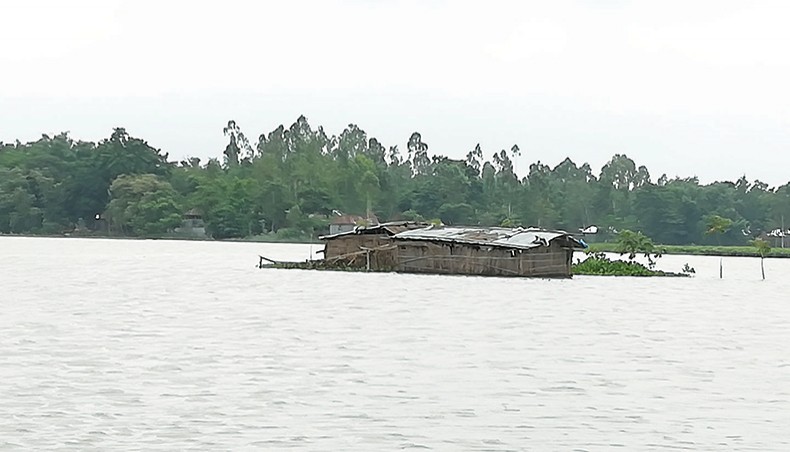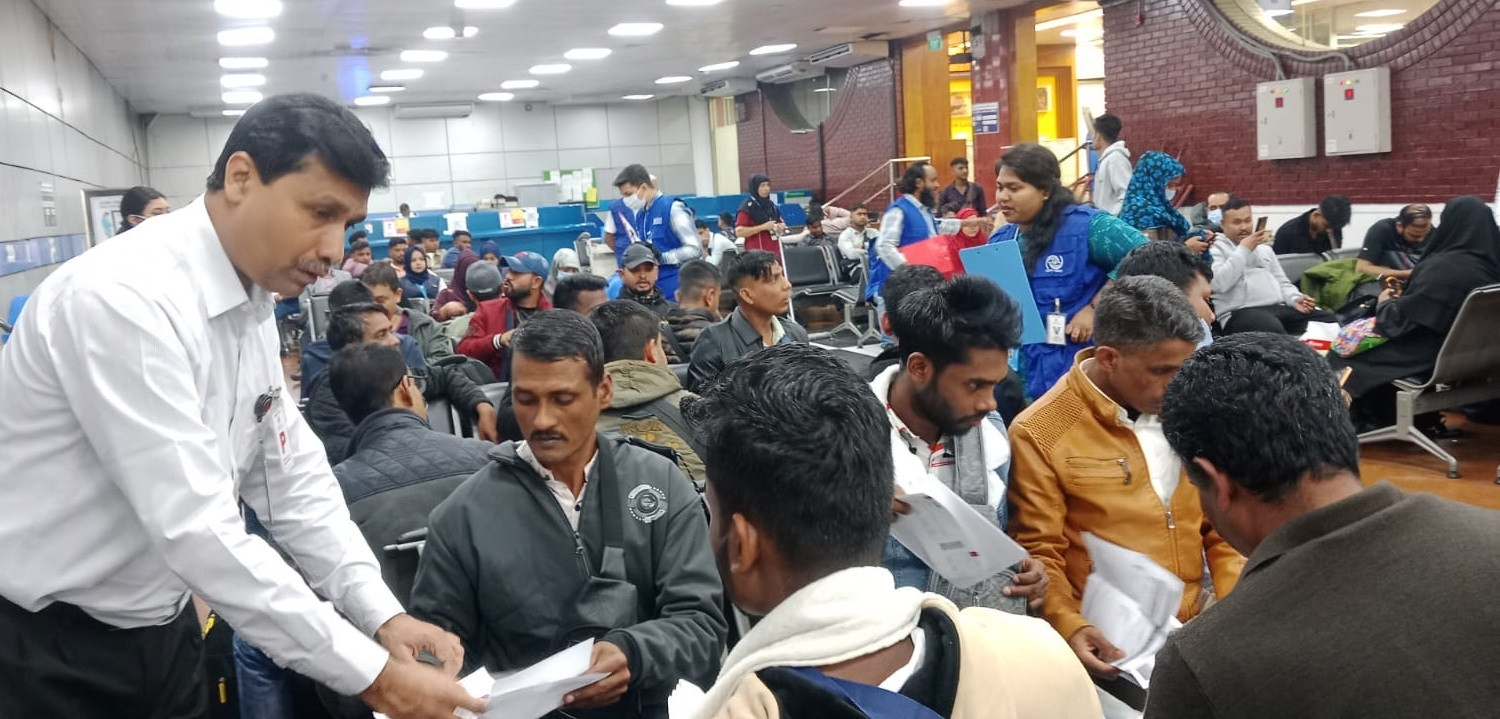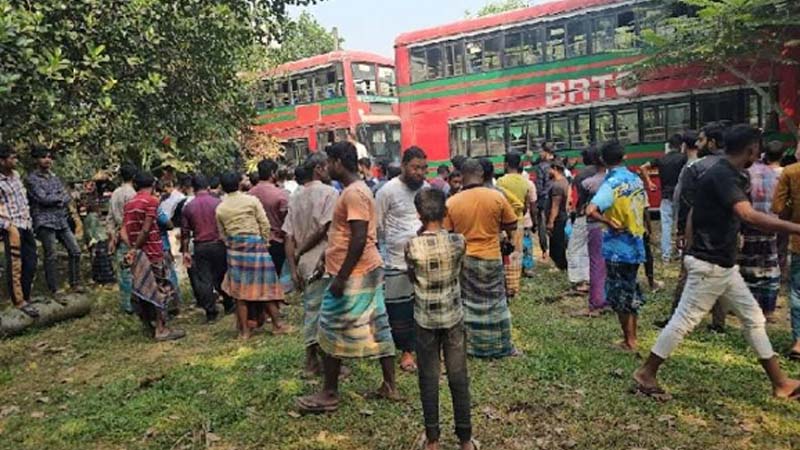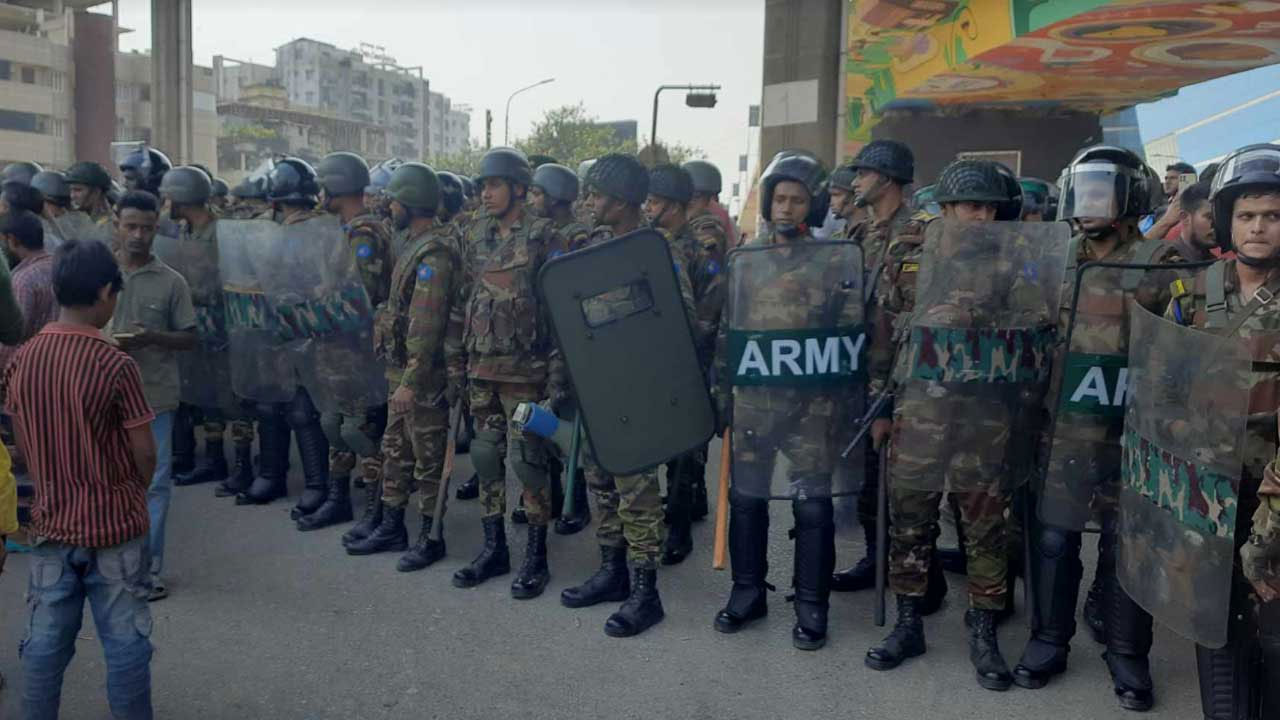At least 56 villages in 12 upazilas of four northern districts went under water after the Teesta and Dharla rivers swelled by about a quarter metre between Thursday evening and Friday afternoon, leaving 40,000 people marooned.
Water Development Board northern region chief Jyoti Prasad Ghosh said that the rapid swelling was caused by the onrush of water from India that opened all 54 gates of the Gazaldoba barrage on Friday morning.
This is the second time since June 20 that the two major northern rivers overflowed their banks inundating vast crop fields and eroding dozens of houses with water levels rapidly receding and swelling.
‘People in low-lying areas have been advised to seek high ground for the rivers would likely to keep swelling,’ said WDB executive engineer at Dalia Rabiul Islam.
Overnight flooding of homes and crop fields are a routine experience by the people living on the banks of Teesta and Dharla, especially those living in the low-lying areas such as chars, as India opens the Gazaldoba barrage without warning every now and then.
But this time heavy cross-border rains were in the weather forecast and the likelihood of flooding in many areas in Bangladesh was warned beforehand.
The New Age correspondent in Lalmonirhat reported that Nilphamari, Kurigram, Gaibandha, Lalmonirhat and Rangpur districts were affected.
The Teesta River was flowing 20 cm above the danger mark at the Dalia point.
Some of the low-lying areas in Kurigram went under up to two feet water as the Dharla was flowing 8 cm above the danger level at the Dharla Birdge point until Friday afternoon, reported our correspondent in Kurigram.
‘My crop field has gone under about two feet water just in a matter of several hours,’ said Bablu, 50, a farmer at Madaikhal village, Kaliganj, Nageshwari.
The Brahmaputra River crossed the danger mark at Chilmari late afternoon and was flowing 4 cm above the mark.
A Flood Forecasting and Warning Centre bulletin predicted that the Jamuna River might cross the danger marks at five points — Fulchhari, Bahadurabad, Sariakandi, Kazipur and Sirajganj — in the next 48 hours until 9:00am Sunday.
The Surma River may cross the danger levels at Kanaighat and Sunamganj points and the Sarigwain River at Sarighat point by 9:00am Saturday, said the FFWC forecast.
The FFWC forecast predicted that the Teesta and Dharla would continue to flow above their danger marks with flooding likely to deteriorate in Kurigram, Gaibandha, Lalmonirhat, Sylhet and Sunamganj until 9:00am Saturday.
The FFWC had already predicted flooding in three major river basins in the country from Saturday because of the heavy cross-border rains.
The FFWC recorded the country’s highest 153 mm rainfall in the 24 hours until 9:00am Friday in Sunamganj.
The northern districts of Panchagarh and Thakurgaon also received 100 mm or more rains during the same period while very heavy rains occurred at many places in Sylhet division.
In the upstream, the highest rainfall of 332 mm was recorded at Cherapunji during the same time, according to the FFWC.
The FFWC observed rising water levels at 68 gauging stations out of the total 101.
The Bangladesh Meteorological Department advised people in Rangpur, Mymensingh, Sylhet and Bogura to brace for heavy to very heavy rains until 3:00pm Saturday.
The New Age correspondent in Mymensingh reported that fear gripped people in many areas where the embankment was in a vulnerable condition as rivers such as Suria in Gouripur swelled rapidly because of the onrush of water from the upstream.
In its medium-range flood outlook on Thursday, the FFWC predicted with hundred per cent certainty that the Jamuna River to cross the danger mark at Elashin, Tangail, by June 30 with a prediction of the flood to stay up to a week.
The medium-range outlook also predicted that the Padma River would cross the danger marks at Bhagyakul, Munshiganj, and Goalondo, Rajbari, in the next five days.










